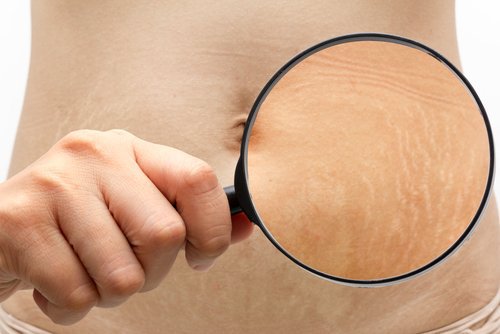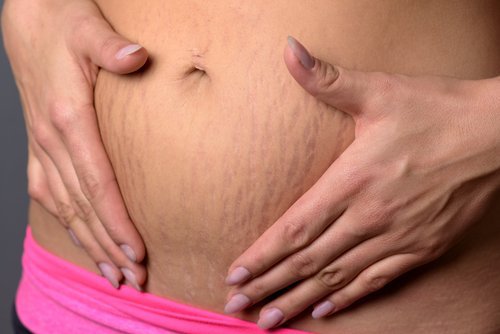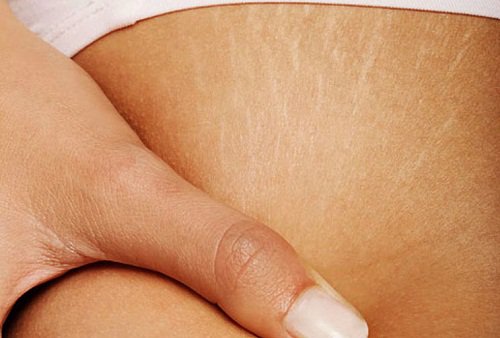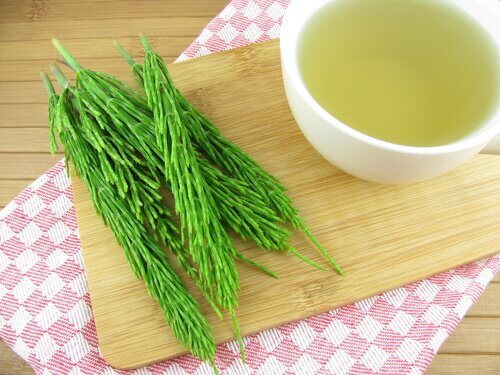6 Tricks to Eliminate or Reduce Stretch Marks


Reviewed and approved by the doctor Karla Henríquez
If there is one thing that’s unsightly, it’s stretch marks. And there’s no doubt that the appearance of our skin is something that concerns everyone. Fortunately, there are natural ways you can help to eliminate or reduce stretch marks.
For those who don’t yet know what stretch marks are, they’re the result of the breakage of elastic fibers in the skin. When the skin is stretched, fibers that have less elasticity are broken and cause stretch marks to appear.
They are especially common in women during pregnancy. At first, they are pink or red in appearance, then they turn white. Stretch marks essentially represent the separation of the skin.
They can appear without warning and are usually painless, although sometimes they might be accompanied with a slight tingling sensation. To prevent them, it’s essential to keep your skin well hydrated. This will allow your dermis to be more elastic and to stretch without causing the breakage of any fibers.
Types of stretch marks
If we want to eliminate or reduce stretch marks then we need to bear in mind that not all stretch marks are the same.
- First of all, there are stretch marks that are caused when the skin is stretched by sudden changes in weight.
- The second type includes those that are formed during puberty. This is a crucial time of growth when your body undergoes important changes. Hormonal disorders during puberty can also lead to the formation of atrophic stretch marks that may be irreversible if they’re not avoided.
- The third type includes those caused by pregnancy: these appear especially in the breasts, abdomen, hips, and buttocks. They usually form during the sixth month of pregnancy when the skin begins to tighten.
- Finally, stretch marks can also appear as a result of excessive exercise or physical strain that modifies the surface of the skin through muscle building or tension (this is the case with athletes, dancers, etc.).
Is it really possible to eliminate or reduce stretch marks?
1. Start with the right moisturizer

Do you want to know more? See: Moisturizing oils for all skin types
2. Take vitamins A and B
Vitamins A and B will help your body regenerate its connective tissues and produce collagen, so they’re great for improving stretch marks.
To obtain these vitamins, increase your consumption of:
- Kiwi
- Carrots
- Blueberries
- Pears
- Figs
- Watermelon
3. Exfoliate
Exfoliating treatments can help improve impurities throughout the layers of the skin, making this an ideal way to resolve those annoying stretch marks. Mandelic acid (found in bitter almonds) and glycolic acid (extracted from sugarcane) can provide excellent results.
If you want to try some deeper treatments, diamond tip dermabrasion is the most effective.
Visit this article: 3 natural exfoliants for face, hands and body
4. Laser treatments

5. Mesotherapy
Mesotherapy is the ideal treatment for stretch marks that have recently appeared (those with a pink or reddish color). It consists of injecting certain compounds into the area (such as hyaluronic acid, antioxidants, vitamins, minerals, or amino acids) to promote cellular regeneration and restore the skin.
You should talk with your doctor about the suitability of this particular practice for you, and always follow the advice of a professional.
6. Horsetail grass

Ingredients
- 4 cups of rubbing alcohol
- 1/2 cup of horsetail grass
- 8 to 10 drops of lemon juice
- 2 cups of water
Preparation
- Firstly, combine the rubbing alcohol with the horsetail grass and lemon juice in a dark container.
- Then leave it for one month. After that time, dilute it with two cups of water. Massage this mixture into the areas affected by stretch marks two times a day.
You’ll really notice the difference!
All cited sources were thoroughly reviewed by our team to ensure their quality, reliability, currency, and validity. The bibliography of this article was considered reliable and of academic or scientific accuracy.
-
Ud-Din, S., McGeorge, D., & Bayat, A. (2016). Topical management of striae distensae (stretch marks): Prevention and therapy of striae rubrae and albae. Journal of the European Academy of Dermatology and Venereology. http://doi.org/10.1111/jdv.13223
-
Al-Himdani, S., Ud-Din, S., Gilmore, S., & Bayat, A. (2014). Striae distensae: a comprehensive review and evidence-based evaluation of prophylaxis and treatment. The British Journal of Dermathology. http://doi.org/10.1111/bjd.12681
-
Buchanan, K., Fletcher, H. M., & Reid, M. (2010). Prevention of striae gravidarum with cocoa butter cream. International Journal of Gynecology and Obstetrics. http://doi.org/10.1016/j.ijgo.2009.08.008
-
Soltanipour, F., Delaram, M., Taavoni, S., & Haghani, H. (2014). The effect of olive oil and the Saj® cream in prevention of striae gravidarum: A randomized controlled clinical trial. Complementary Therapies in Medicine. http://doi.org/10.1016/j.ctim.2013.11.011
This text is provided for informational purposes only and does not replace consultation with a professional. If in doubt, consult your specialist.








